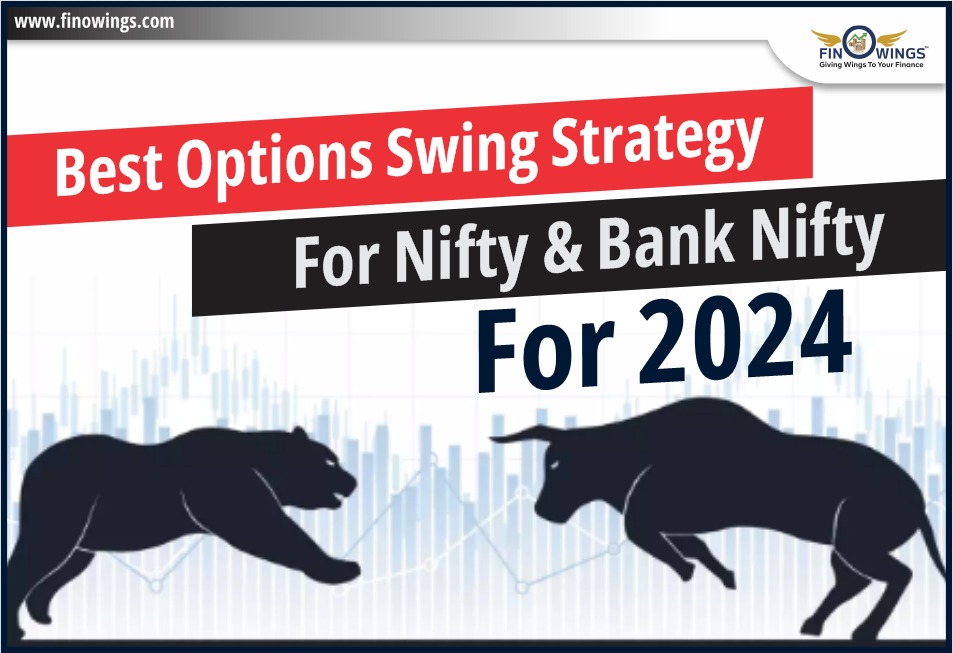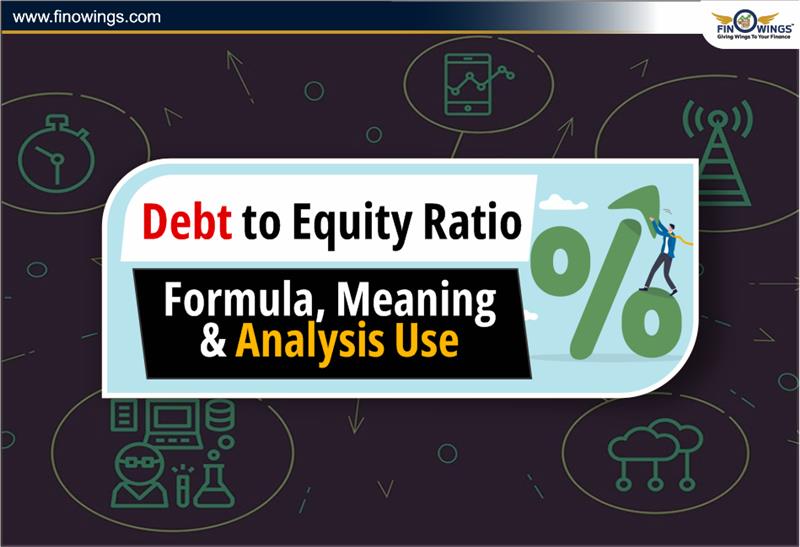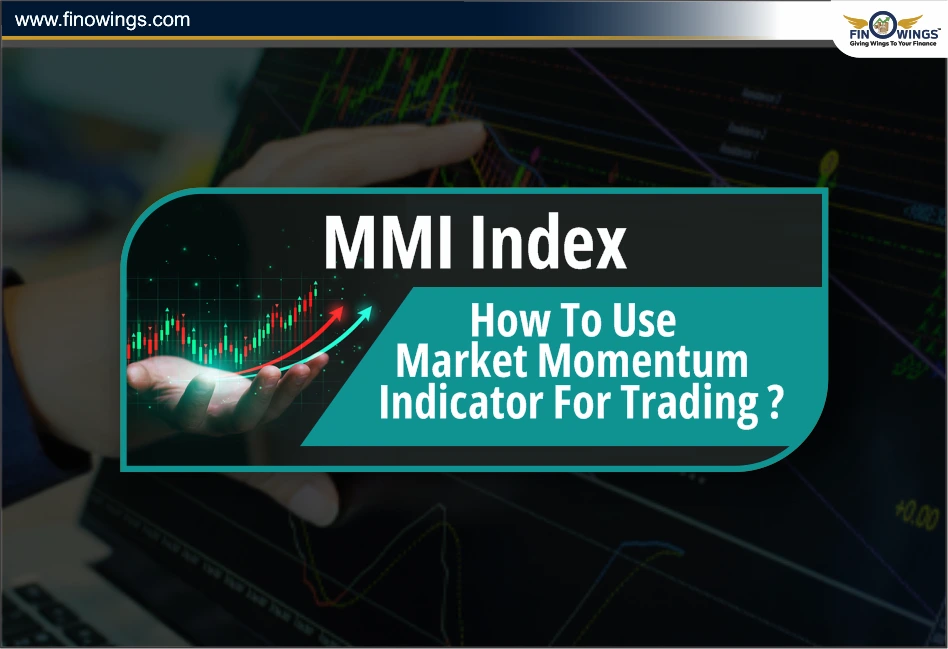Home >> Blog >> Best Options Swing Strategy for Nifty & Bank Nifty for 2024
Best Options Swing Strategy for Nifty & Bank Nifty for 2024

Table of Contents
Introduction
Are you ready to explore the exciting world of options trading? If you've been exploring strategies to capitalise on the potential of sideways markets, we've got just the thing for you – the Options Swing Strategy! Written specifically for Nifty and Bank Nifty, this approach is designed to help you make the most of market conditions while avoiding stock-specific liquidity challenges.
Strategy Overview
One key aspect of successful trading is the ability to identify sideways markets. Sideways markets refer to periods when the stock price remains relatively stable, with no significant upward or downward movement. To identify sideways markets, traders can use various time frames, but for beginners, a day time frame is recommended.
During an uptrend or downtrend, the market follows a clear direction. However, during a sideways move, it is crucial to pay attention to the Nifty and Bank Nifty charts. These charts provide valuable insights into the market's behaviour and can help traders make informed decisions.
Conditions for Application
But first, a crucial note – this strategy is exclusively for Nifty and Bank Nifty. Avoid applying it to individual stocks. The key lies in identifying that sweet spot when Nifty or Bank Nifty is gearing up for a sideways move.
Detailed Video
Time-frame
In the world of day trading, timing is everything. That's why our strategy operates within the day timeframe, ensuring you capture the essence of market movements efficiently.
Calculating Maximum Profit and Loss
It is essential to determine the maximum profit and loss potential of any strategy before executing it. By using an options builder tool, you can calculate the maximum loss and maximum profit. This tool allows you to select the strike price according to your preference and provides accurate calculations for potential profits and losses.
Risk-Reward Ratio
Understanding the risk-reward ratio is vital for successful trading. It helps traders evaluate the potential profitability of a trade compared to the risk involved. For example, if the risk-reward ratio is 1:2, it means that for every unit of risk, there is a potential gain of two units. By focusing on trades with a favourable risk-reward ratio, traders can increase their chances of profitability.
Exit Strategy
Having a clear exit strategy is as important as having an entry strategy. When trading in a sideways market, it is recommended to set profit targets and exit the trade once the target is achieved. Typically, a profit target of around 70% is considered favourable. By sticking to the exit strategy, traders can lock in profits and minimise losses.
Strategy Execution
1. Uptrend Scenario:
- In an uptrend transitioning into a sideways movement, sell an out-of-the-money (OTM) call 100 points above the recent high.
- Hedge your position by buying a call with a premium of 10-12 Rs from the most recent expiry.
2. Downtrend Scenario:
- If the Nifty is in a downtrend, shifting into a sideways pattern, sell an OTM put 100 points below the recent low.
- Hedge the risk by buying a put with a premium of 10-12 Rs from the most recent expiry.
3. How to Identify Sideways Moves:
Watch for Nifty and Bank Nifty to trade sideways after a 4 to 5-day move. This pattern occurs 70% to 80% of the time, providing ample opportunities for the Options Swing Strategy.
4. Stop-loss and Target:
Determine your maximum loss using the Opstra Builder tool, and let that guide your stop-loss. Hold the position until you achieve the maximum profit or until expiry, whichever comes first.
5. Fund Requirement:
While the strategy requires a margin of 30k-40k, keep in mind that this is the maximum requirement. It could be less, giving you flexibility based on your risk appetite.
Additional Tips and Notes:
- If the premium for the selling option is below 40-50 Rs, consider buying the hedge option for 5 Rs or less.
- Options sellers enjoy a winning probability of 66.7%, and the strategy's accuracy consistently exceeds 70%.
Conclusion
Stock market strategies are essential for understanding the difficult world of trading. Whether trading in a sideways market or following other techniques, it is crucial to have a well-defined strategy in place. By understanding the dynamics of the Nifty and Bank Nifty indices, traders can make informed decisions and increase their chances of success.
Disclaimer:
Please note that this blog is not any recommendation for buying or selling any stock. We always encourage the reader to do their research before investing in any stock.
Frequently Asked Questions
The Options Swing Strategy focuses on capturing opportunities in sideways markets, specifically designed for Nifty and Bank Nifty trading. It involves identifying sideways movements in these indices and executing options trades based on specific conditions during uptrends, downtrends, and transitional periods.
This strategy is exclusively designed for Nifty and Bank Nifty due to their reliability in indicating sideways market movements. Traders are advised against applying it to individual stocks, emphasizing the importance of identifying the appropriate market conditions for its application.
In an uptrend transitioning to a sideways move, the strategy involves selling an out-of-the-money call while hedging with a call option. Conversely, in a downtrend transitioning to a sideways pattern, selling an out-of-the-money put and hedging with a put option is recommended.
Traders are advised to determine maximum losses using options builder tools and set stop-loss levels accordingly. Profit targets are recommended at around 70% with exits once targets are achieved. Holding the position until maximum profit or expiry is essential.
The strategy generally requires a margin of 30k-40k but could be lower based on risk appetite. Additional tips include considering hedging when the premium for selling options is below 40-50 Rs. The strategy boasts a 66.7% winning probability, with an accuracy consistently exceeding 70%.




















